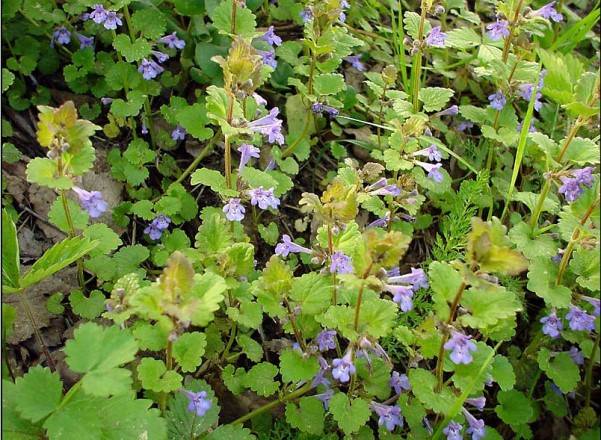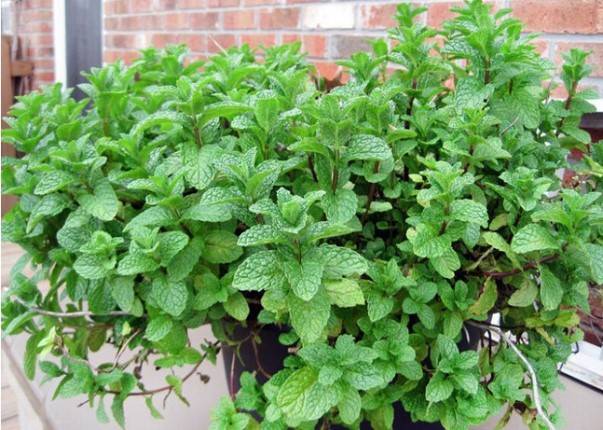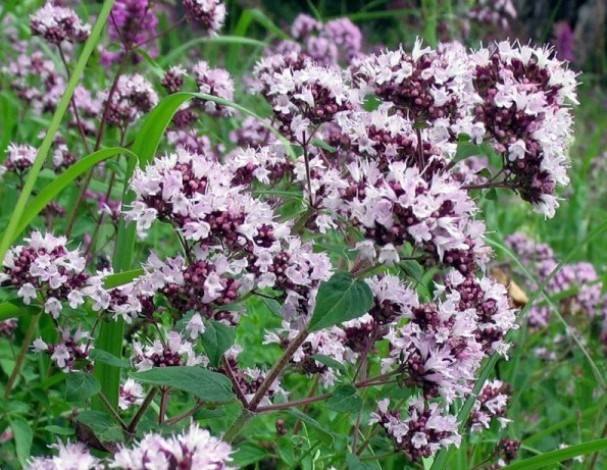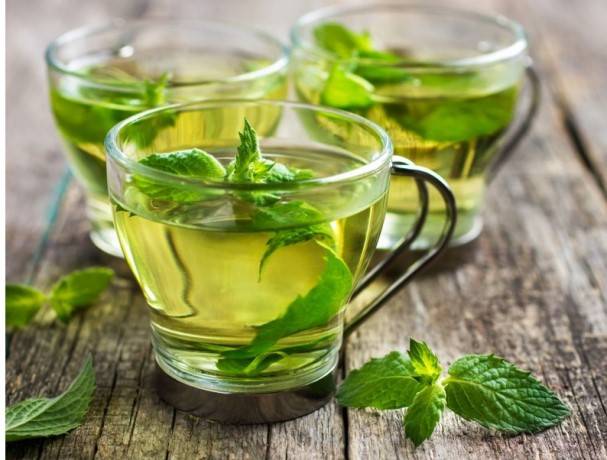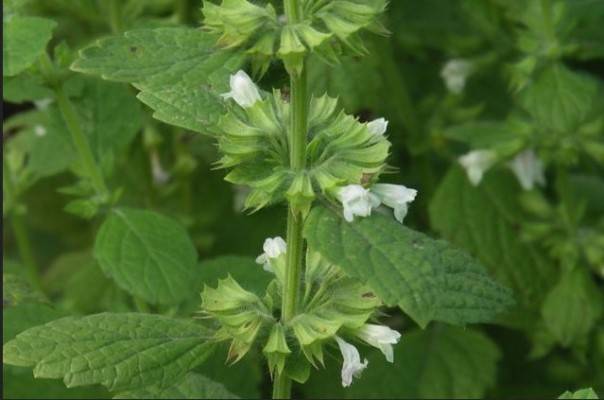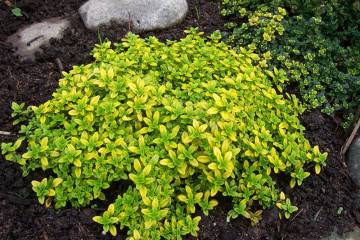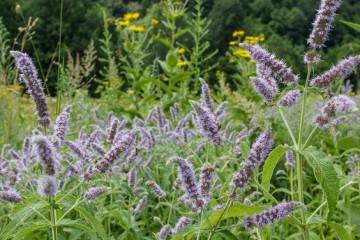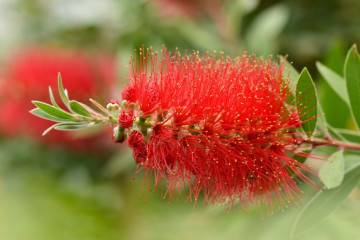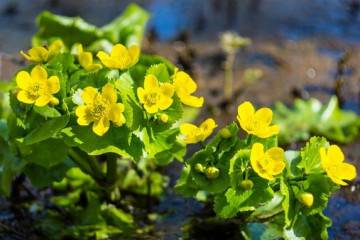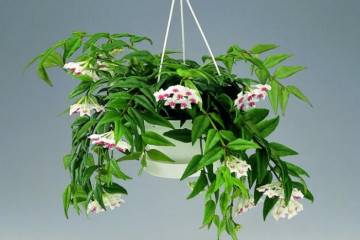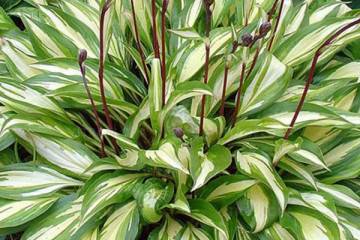Species of mint - field mint, lemon catnip, marsh
Everyone has tried mint tea, but few know that the plant is divided into many types. The features of mint varieties and its medicinal properties will be discussed below.
Species of mint
There are 42 plant species in the wild. All types of mint have a sugary aroma. The extraordinary odor is due to the menthol in the plant.
Shoots and leaves of the culture are used in cooking, perfumery, cosmetology, pharmacology.
Peppermint
One of the most common types of mint. Hydride is grown in garden beds and on an industrial scale. An unsightly shrub 30-100 cm high. On thin, straight stems, oval leaves with a pointed edge are arranged crosswise. Small flowers are collected in inflorescences in the form of an ear.
Field mint has a herbaceous crown, which freezes out for the winter and is renewed every spring thanks to a strong developed rhizome. The plant is a honey plant, raw materials are used in cooking, perfumery, aromatherapy, medicine.
Field mint
It grows wild in fields and shaded forest areas in temperate climates. The bush grows up to 70 cm in height, small inflorescences of small lilac-purple flowers are located between the leaves. The smell of the variety is delicate, the culture is used in cooking.
Lemon Catnip
Lemon Catnip is named feline for its special scent that attracts cats. Wild shrub grows in abandoned pastures and meadows. The crown grows up to 1 m in height, is distinguished by diamond-shaped leaves, a small pyramid of pale pink flowers.
Pennyroyal
Marsh mint grows along river banks, in swampy areas of Asia, the North Caucasus and all of Europe. The species served as the parent material for various plant hybrids, such as pepper, pineapple, apple crops.
The height of the bush is up to 60 cm, the flowers are collected in spherical inflorescences. Leaves are used as a spice, make squeeze for fragrances in perfumery. Folk healers make a tincture from raw materials for healing wounds, calming nerves.
Fragrant mint
The plant is named fragrant for the enchanting scent of flowers collected in a brush. The shrub grows in sunny places in the Mediterranean, Asia. For its characteristic smell, aromatic mint is used in cooking.
The bush grows up to 40 cm in height, ovoid leaves are alternately located along the entire length of the straight stem. The culture blooms with small light pink flowers, collected in inflorescences in the form of a loose ear.
The fragrant variety was one of the first to be cultivated by humans. The flower is planted as a honey plant, the persistent smell attracts bees.Grass planting scares away harmful insects, this happens with the help of substances that are contained in the plant sap.
Moroccan mint
A Moroccan variety of mint native to North Africa, often referred to as green or garden menthol herb. The leaves have a corrugated shape, a pleasant caramel flavor. The bush juice has a low menthol content. The plant is dried to prepare a soothing tea and gastric infusions.
The foliage is used to make toothpastes, tobacco, and perfumes. The decorative crown of the North African variety is sent to the preparation of the mojito drink.
Garden mint
A short bush grows in Central Russia, blooms in the second half of summer with lilac inflorescences hidden in internodes among the leaves. The herb is used as a spice in cooking. Cakes and drinks in glasses are decorated with pointed leaves of garden mint.
Spearmint
Spearmint for the delicate berry aroma of the leaves is called strawberry. The variety grows in flat areas in all countries adjacent to the Mediterranean. Bush up to 1 m in height with triangular toothed leaves and racemose inflorescences at the top. Lavender-colored flowers are arranged around the stem, forming a loose spikelet.
The variety has a delicate aroma, oil flavor without bitterness. Raw materials are sent to create cigarette fragrances, toilet soap.
Long-leaved mint
Long-leaved mint grows in moist soils in well-lit areas of Europe and Central Asia. It is a bush of impressive size, up to 1.5 m in height, with lanceolate leaves up to 15 cm in length. Small lilac flowers are collected in racemose ears. The species is grown in gardens, used in group plantings in landscape design.
Forest mint
The forest variety grows on the slopes of sunny areas, it gets along easily in urban areas. The shrub gives the appearance of a natural village landscape in the garden area, can grow in one place for up to 20 years.
A compact bush up to 60 cm in height, covered with oval leaves, on the tops of the stems there are small fluffy inflorescences of pink-lilac flowers. The plant is recommended to be planted after vegetable crops in order to clear the site of pathogenic bacteria and harmful insects.
Ukhta curly
The shrub has a double leaf shape and does not have a pungent menthol odor. The ornamental species is grown for decorating front gardens and for culinary use.
In cultural cultivation, the water balance is important for the plant. Frequent watering is needed to keep the soil constantly moist.
A variety, similar in smell to a peppery appearance, has a difference in composition. Curly grass has more flavonoids and less menthol, which gives the juice a vigorous flavor.
Dress mexican
Mint Dress is native to Latin America. The appearance is very different from other varieties. Erect bush up to 1 m tall with a sparse crown. Oval leaves alternately grow on straight stems. The top is crowned with spike-shaped inflorescences of buds of different shades - white, pink, purple. The Mexican variety prefers to bloom in late summer.
What does mint look like?
Mint is a plant that belongs to the Lamiaceae family. It is represented by a perennial herbaceous shrub up to 100 cm high with oval leaves and an inflorescence of small lilac flowers.
How mint blooms
The shape of the flowers and the color of the mint differ slightly in different hybrids.The general description of the flower in all varieties is a small bud, consisting of 4 petals, lilac, light purple in color. Inflorescences in different forms may look different, they are collected in a spikelet or an incomplete ball.
The plant blooms from June to September. This period may differ depending on the variety. The highest concentration of nutrients before flowering. Therefore, the leaves for medicinal and food preparations are harvested before the buds bloom.
Medicinal properties of mint
Mint leaves contain a large amount of essential oils that are used as pomace to treat various ailments. From the juice of the plant, a substance is obtained for the preparation of tincture and oil.
With the help of inhalations on menthol water, bronchitis, wheezing in the lungs are treated. Aromatherapy with menthol oil soothes nervous nerves, relieves headaches, and restores appetite. Ointments are used to treat burns, treat cuts, and relieve muscle spasms.
Mint teas are drunk for a diuretic effect, but abuse can lead to dehydration, as enzymes actively expel fluid from the body.
The fresh, cooling flavor of peppery herb freshens the breath after a hangover. Mint-based tablets and drinks are a contraindication for drivers, as they reduce attention.
In addition to the beneficial properties of the plant, there are a number of contraindications:
- treatment is contraindicated in children under 5 years of age. High concentrations of menthol cause a spasm in the airways in infants;
- people with low blood pressure should not take medications based on mint raw materials. Such drugs relax the heart muscle, reduce vascular tone;
- the plant is also contraindicated for pregnant and lactating women.
Ordinary mint herb can have both a healing effect on the body and lead to a deterioration in well-being. You need to delve into the characteristics of the plant before deciding to take a medicine based on a natural component.
Briefly about the history of appearance
According to legend, mint is named after the nymph Minta, who was turned into a fragrant plant for her connection with the king of the underworld. The plant is mentioned in Egyptian culture. The unique properties of the plant were used in Assyria to treat diseases and raise mood. In Europe, mint grass began to be grown in monastery gardens in the Middle Ages.
The difference between mint and lemon balm
At first glance, these two plants appear to be the same, but a closer look reveals the difference.
The main difference is the shape of the inflorescence. In lemon balm, lilac flowers are collected in rings of 5-8 buds, in mint, a purple inflorescence has the shape of a spikelet. You can also distinguish a bush by the outline of the foliage. Melissa smells like lemon, while the menthol variety exudes a pungent cooling scent. The first shrub has light green leaves of a rounded shape with a velvety surface. The menthol leaf is pointed, oblong, smooth to the touch.
Lemon balm leaves are used as a seasoning to enhance the flavor of meat. Medicines based on its raw materials help in the treatment of colds, relieve spasms, and fight depression. The content of essential oils is negligible compared to the menthol plant.
Mint thickets were seen by everyone who had to be in nature in the fields and forests of the Central strip. Thanks to the article, it is now clear that the plant is represented by many varieties with beneficial properties. An ordinary wild flower can heal diseases, it can be used in cooking.The main thing is to choose the right type.
